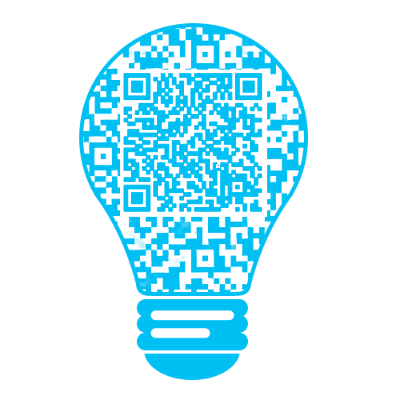TPO 17-1 Europe’s Early Sea Trade with Asia(社会科学--商业)
字数:723
建议做题时间 20分钟
In the fourteenth century, a number of political developments cut Europe's overland trade routes to southern and eastern Asia, with which Europe had had important and highly profitable commercial ties since the twelfth century. This development, coming as it did when the bottom had fallen out of the European economy, provided an impetus to a long-held desire to secure direct relations with the East by establishing a sea trade. Widely reported, if somewhat distrusted, accounts by figures like the famous traveler from Venice, Marco Polo, of the willingness of people in China to trade with Europeans and of the immensity of the wealth to be gained by such contact made the idea irresistible. Possibilities for trade seemed promising, but no hope existed for maintaining the traditional routes over land A new way had to be found.
The chief problem was technological: How were the Europeans to reach the East? Europe's maritime tradition had developed in the context of easily navigable seas—the Mediterranean, the Baltic, and, to a lesser extent, the North Sea between England and the Continent—not of vast oceans. New types of ships were needed, new methods of finding one's way, new techniques for financing so vast a scheme. The sheer scale of the investment it took to begin commercial expansion at sea reflects the immensity of the profits that such East-West trade could create. Spices were the most sought-after commodities. Spices not only dramatically improved the taste of the European diet but also were used to manufacture perfumes and certain medicines. But even high-priced commodities like spices had to be transported in large bulk in order to justify the expense and trouble of sailing around the African continent all the way to India and China.
The principal seagoing ship used throughout the Middle Ages was the galley, a long, low ship fitted with sails but driven primarily by oars. The largest galleys had as many as 50 oarsmen Since they had relatively shallow hulls, they were unstable when driven by sail or when on rough water: hence they were unsuitable for the voyage to the East. Even if they hugged the African coastline, they had little chance of surviving a crossing of the Indian Ocean. Shortly after 1400, shipbuilders began developing a new type of vessel properly designed to operate in rough, open water: the caravel. It had a wider and deeper hull than the galley and hence could carry more cargo: increased stability made it possible to add multiple masts and sails. In the largest caravels, two main masts held large square sails that provided the bulk of the thrust driving the ship forward, while a smaller forward mast held a triangular-shaped sail, called a lateen sail, which could be moved into a variety of positions to maneuver the ship.
The astrolabe had long been the primary instrument for navigation, having been introduced in the eleventh century. It operated by measuring the height of the Sun and the fixed stars: by calculating the angles created by these points, it determined the degree of latitude at which one stood (The problem of determining longitude, though, was not solved until the eighteenth century.) By the early thirteenth century. Western Europeans had also developed and put into use the magnetic compass, which helped when clouds obliterated both the Sun and the stars. Also beginning in the thirteenth century, there were new maps refined by precise calculations and the reports of sailors that made it possible to trace one's path with reasonable accuracy. Certain institutional and practical norms had become established as well. A maritime code known as the Consulate of the Sea, which originated in the western Mediterranean region in the fourteenth century, won acceptance by a majority of sea goers as the normative code for maritime conduct; it defined such matters as the authority of a ship's officers, protocols of command, pay structures, the rights of sailors, and the rules of engagement when ships met one another on the sea-lanes. Thus by about 1400 the key elements were in place to enable Europe to begin its seaward adventure.
题目
答案解析
1. 词汇题
解析:impetus动力、刺激,选C
2. 事实信息题
解析:根据a new way定位到最后一句,但这句话只是陈述事实,并没有说明为何要找到新路。往前看,说没有希望维持传统陆地路线,而文章开头就说明政治发展切断了陆路到亚洲的贸易,选D
3. 事实信息题
解析:根据main difficulty(与chief problem同义表达)定位到第1句,说主要问题是技术的,欧洲人如何到达东方?接着说欧洲的航海传统在容易航行的海域,所以选B,航海技术不能跨越海洋。
4. 句子简化题
解析:原句结构为投资规模反映了巨额利润,A对。B改变结构,原句没有比较。C改变意思。D原句没有这个因果关系。
5. 词汇题
解析:dramatically剧烈地、戏剧性地,选B
6. 推断题
解析:根据spices定位到倒数第3句,说香料最受欢迎,下句说明香料的作用,最后一句说需要大量运输,所以可以推断欧洲是不产的,选B
7. 事实信息否定题
解析:A根据masts定位到最后2句,说caravel有更多masts,A错,选A。B根据hull定位到倒数第2句,caravel的hull更大更深装更多货物,B对,C也对。D根据stable定位到倒数第2句 more stable对应increased stability,对。
8. 事实信息题
解析:根据lateen sail定位到最后一句,说lateen sail可以移动到各种位置来操纵船,所以选D,guide有操纵的意思。其他选项文章没说
9. 修辞目的题
解析:这里说欧洲也使用了磁罗盘,前面都在说使用astrolabe (星盘)来导航,所以本段高亮部分之前是两个例子,没有观点,那么应该是支持前文的内容,第2段就提出问题在于技术,于是之后都在说和技术相关的问题,而这里说明的是其中的一个技术进步,选C
10. 词汇题
解析:re-又、再,fine好的,猜测refine使...变好、精进,选B。Refine精炼、改善
11. 词汇题
解析:norms规范,选D. 后面说establish建立,ABC都不搭
12. 事实信息题
解析:根据maritime code定位到倒数第2句,说明了这个code的来源,被很多人接受,确定了船长船员权力、交汇规则等,B对应it defined such matters...的内容,选B。ACD没说
13. 句子插入题
解析:插入句说它们受到重视有几个原因,所以后文应该会说原因。highly valued 对应B前的most sought-after, B后在说香料不仅如何还如何,说明了它们的重要性,是受重视的原因,选B。
14. 段落小结题
解析:A是第1段中的一个细节,不选
B对应第2段最后一句,正确
C与第3段相反,不选
D对应第3段后半部分,正确
E对应第3段,正确
F是第1段中的一个细节,不选
出国深造本是好事,切不可本末倒置,忘记了留学的真正价值。
雷哥托福:www.toeflonline.cn;雷哥托福试听课程详情请咨询:400-6021-727
你不知道的,小托君都知道,更多备考秘籍 ,尽!情!找!他!要!
雷哥托福小托君微信号:Toefl12345(下图是二维码,快加我呀)注:二维码有时限

共有 0 条回复
相关文章